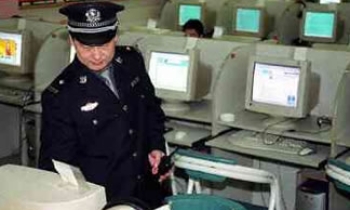NEW YORK, June 8 (Reuters) - The boardroom battle at Tribune Co. over a share buyback plan underscores pressures facing the newspaper industry, including sinking share prices, declining readership and competition from the Internet.
Some in the industry have responded by batting around ideas such as shutting down newspapers and focusing on online news and advertising. Others suggest cutting longtime newspaper mainstays, such as columns, stock tables and movie reviews.
Meanwhile, Tribune and others are weighing stock buybacks to prop up stock prices.
Analysts believe that Tribune's (TRB.N: Quote, Profile, Research) plan to buy back 25 percent of its shares -- a plan opposed by three influential Tribune board members -- portends a management buyout, a strategy some industry observers believe could benefit other publishers, as well.
The problem is that the most dramatic ideas for preserving the business could hurt profits over the short term.
"They're kind of frozen at the wheel because the money is still coming in," said Philip Meyer, a professor at the University of North Carolina and author of "The Vanishing Newspaper: Saving Journalism in the Information age."
"Nobody knows what they must do, and without a lot of experimentation and a lot of trial and error, they won't find out," Meyer said.
THREATS ON EVERY FRONT
Newspapers are threatened on nearly every front. More young readers are getting their news from the Internet. Online media networks such as Google (GOOG.O: Quote, Profile, Research) and Yahoo (YHOO.O: Quote, Profile, Research) are gunning for newspapers' lifeblood of local advertising.
Standard & Poor's publishing index <.GSPPUBL>, which includes the largest U.S. newspaper owners including Gannett Co. (GCI.N: Quote, Profile, Research), Knight Ridder Inc. (KRI.N: Quote, Profile, Research), and Tribune Co. is down 15 percent in the past 12 months.
In 2005, combined national and local newspaper advertising rose 1.8 percent to about $28.6 billion, one of the slowest rates of growth within the media industry, according to research firm TNS Media Intelligence. Internet advertising, by contrast rose 13 percent to $8.3 billion.
Newspaper operating profits are sliding at many companies, though profit margins often hover around a healthy 20 percent.
Daily newspaper circulation fell 6.5 percent between 1984 and 1994, and another 7.9 percent between 1994 and 2004, according to the Editor & Publisher International Yearbook.
Newspapers have tried to boost revenue by raising subscription and newsstand prices. They also have tried to cut costs through layoffs, bureau closings, reducing newsprint consumption and outsourcing administrative jobs.
Some companies have bet big on the Internet, such as the New York Times, which bought About.com for about $410 million, and Dow Jones, which bought MarketWatch for $463 million.
Gannett, Knight Ridder and Tribune formed the CareerBuilder.com joint venture. They and Belo Corp., McClatchy Co. (MNI.N: Quote, Profile, Research). and The Washington Post Co. started Cars.com, a site where users buy and sell cars.
One radical suggestion is to close down newspapers and publish on the Internet instead. But nearly everyone in the industry says it is too soon to do that.
Most people in the business call newspapers their "core product," a frustrating view for some online editors.
"That phrase is starting to drive me nuts," said John Leach, editor of azcentral.com, the Web site for Gannett Co. Inc.'s (GCI.N: Quote, Profile, Research) The Arizona Republic. "We have a suite of products that reaches a larger audience than the paper itself does."
PRESSED FOR SUCCESS
Until online revenue grows enough to offset falling circulation, metropolitan dailies likely will have to operate on smaller scales to cut costs, analysts said. This month, the Boston Globe will drop its daily stock tables as it bolsters its digital delivery with a feed tailored for mobile phones.
More columnists -- such as golf experts, horse-racing commentators or movie critics -- could see their jobs go as newspapers pump up local coverage, analysts said.
But Jonathan Krim, director of strategic initiatives for washingtonpost.com ruled out big job cuts for any publication that wants to maintain the quality of its reporting.
Otherwise, newspapers "are going to very quickly find themselves in the death spiral where they are diluting the quality of their product to the point where readers don't want them anymore anyway," Krim said.
PRIVATE ACTIONS
The biggest problem with radical actions is that it risks turning surly investors into angry ones, executives say.
Major changes in strategy, such as going completely digital or halving newsroom jobs, carry high risks and are dangerous given Wall Street's focus on quarterly numbers and investors' tendencies to punish errors by selling stock.
Publishers seeking big changes could consider following the lead of other mature businesses by raising dividends and buying back more stock. They could also consider going private.
Some analysts ask why Tribune, publisher of the Los Angeles Times and the Chicago Tribune, is content with only a buyback.
Jeff Jarvis, who runs the buzzmachine.com media affairs blog, said privately held companies such as Advance Publications Inc., which publishes The Plain Dealer in Cleveland and The Times-Picayune in New Orleans, have more freedom to experiment.
"We will look for the one guy who says we're going to make the tough decisions to get us over the hump," he said. "If you're the first one ... to do it, you're going to look better than the guys sitting like Fred Flintstone and trying to hold onto the quarry."









